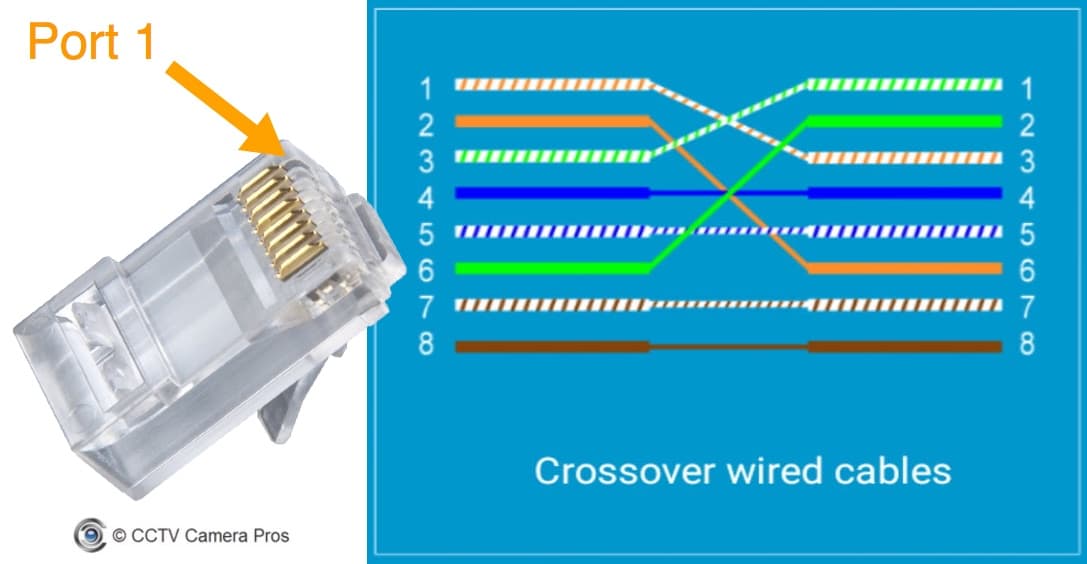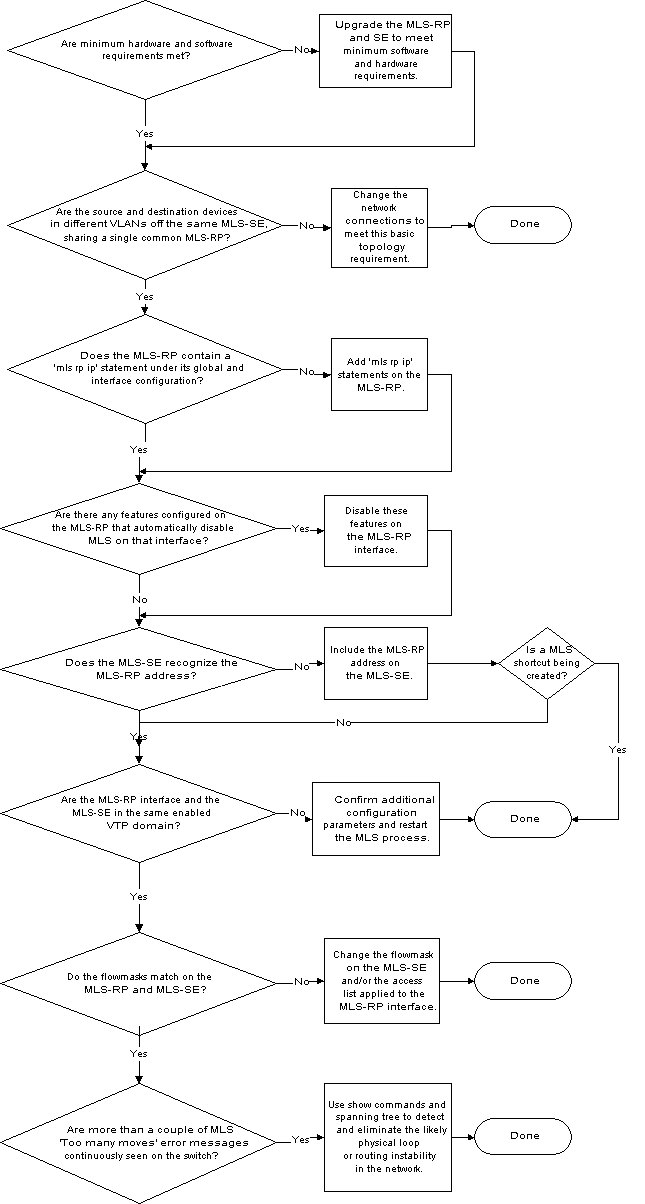As there are fault occurrences in straight-through cable crossover cable came into exists. The drawback is drawn when two PC’s want to connect, transmit, and to listen. Eg, when pc-1 and pc-2 are connected with a straight-through cable.

Ethernet cables can be wired as straight through or crossover. The straight through is the most common type and is used to connect computers to hubs or switches. They are most likely what you will find when you go to your local computer store and buy a patch cable. Crossover Ethernet cable is more commonly used to connect a computer to a computer and may be a little harder to find since they aren’t used nearly as much as straight through Ethernet cable. Then, what’s the difference between straight through vs crossover cable? Read through this post to find the answer.
T568A And T568B Wiring Standard Basis
A RJ45 connector is a modular 8 position, 8 pin connector used for terminating Cat5e patch cable or Cat6 cable. A pinout is a specific arrangement of wires that dictate how the connector is terminated. There are two standards recognized by ANSI, TIA and EIA for wiring Ethernet cables. The first is the T568A wiring standard and the second is T568B. T568B has surpassed 568A and is seen as the default wiring scheme for twisted pair structured cabling. If you are unsure of which to use, choose 568B.
Download Free Patch Cable Crossover Cable Same Software Free
- C2G 27861 Cat6 Crossover Cable - Snagless Unshielded Network Crossover Patch Cable, Red (3 Feet, 0.91 Meters) 4.8 out of 5 stars 133 $7.91 $ 7. 91 $10.99 $10.99.
- A crossover cable is only required when interconnecting two devices with the same functionality. Another significant difference between crossover cables and standard patch cables is that each type will have different wire arrangement in the cable for serving different purposes. If you hold up both ends of the cable and compare the pin-outs, you.
- Or a 'crossover' cable? What exactly IS a crossover cable? Or do I use a system link cable?and what exactly is that? And what is a 'patch' cable? And is the method of system linking via cables two 360's the same as system linking two original xboxes.or do they use different cables?
Straight Through vs Crossover Cable
What Is Straight Through Cable?
A straight through cable is a type of twisted pair cable that is used in local area networks to connect a computer to a network hub such as a router. This type of cable is also sometimes called a patch cable and is an alternative to wireless connections where one or more computers access a router through a wireless signal. On a straight through cable, the wired pins match. Straight through cable use one wiring standard: both ends use T568A wiring standard or both ends use T568B wiring standard. The following figure shows a straight through cable of which both ends are wired as the T568B standard.
Download Free Patch Cable Crossover Cable Same Software Download
What Is Crossover Cable?
A crossover Ethernet cable is a type of Ethernet cable used to connect computing devices together directly. Unlike straight through cable, the RJ45 crossover cable uses two different wiring standards: one end uses the T568A wiring standard, and the other end uses the T568B wiring standard. The internal wiring of Ethernet crossover cables reverses the transmit and receive signals. It is most often used to connect two devices of the same type: e.g. two computers (via network interface controller) or two switches to each other.
Straight Through vs Crossover Cable, which to choose?
Straight through vs crossover cable, which one should I choose? Usually, straight through cables are primarily used for connecting unlike devices. And crossover cables are use for connecting alike devices.
Use straight through Ethernet cable for the following cabling:
- Switch to router
- Switch to PC or server
- Hub to PC or server
Use crossover cables for the following cabling:
- Switch to switch
- Switch to hub
- Hub to hub
- Router to router
- Router Ethernet port to PC NIC
- PC to PC

Conclusion on Straight Through vs Crossover Cable

Straight through and crossover cables are wired differently from each other. One easy way to tell what you have is to look at the order of the colored wires inside the RJ45 connector. If the order of the wires is the same on both ends, then you have a straight through cable. If not, then it’s most likely a crossover cable or was wired wrong. At present, the straight through cable is much more popular than crossover cable and is widely used by people. FS.COM provides a full range straight through Cat5e, Cat6, Cat6a and Cat7 Ethernet cableswith many lengths and colors options. Look for Ethernet patch cables, just come to FS.COM!
Related Articles:
Ethernet Cable Types – Cat5e, Cat6, Cat6a, and Cat7
Patch Cable vs. Crossover Cable: What Is the Difference?
Quick View of Ethernet Cables Cat5, Cat5e And Cat6
A patch cable, patch cord or patch lead is an electrical or optical cable used to connect ('patch in') one electronic or optical device to another for signal routing. Devices of different types (e.g., a switch connected to a computer, or a switch to a router) are connected with patch cords.
Patch cords are usually produced in many different colors so as to be easily distinguishable with each other. Types of patch cords include microphone cables, fiber optic spectroscopy cables, headphone extension cables, XLR connector, Tiny Telephone (TT) connector, RCA connector and ¼' TRS phone connector cables (as well as modularEthernet cables), and thicker, hose-like cords (snake cable) used to carry video or amplified signals. However, patch cords typically refer only to short cords used with patch panels.
The term 'patch' came from early use in telephony and radio studios, where extra equipment kept on standby could be temporarily substituted for failed devices.[citation needed] This reconnection was done via patch cords and patch panels, like the jack fields of cord-type telephone switchboards. Furthermore, patching could also create temporary atypical connections between devices for unusual needs. Analog music synthesizers typically use patch cables to interconnect functional sections, such as oscillators, filters, etc.
A patch cord cable differs from a standard structured cabling in that a patch cable is stranded for flexibility, whereas a standard cable is solid copper. Because the patch cord is stranded copper construction the attenuation (signal loss) is higher on patch cords than solid cable so short lengths should be adhered to.[1]
They can be as short as 3 inches (c. 8 cm), to connect stacked components or route signals through a patch bay, or between 6 meters (c. 20 feet) and 50 meters (c. 164 feet) for snake cables. As length increases, the cables are either thicker and/or more shielded, to prevent signal loss (attenuation) and the introduction of unwanted radio frequencies and hum (electromagnetic interference).
Patch cords are often made of coaxial cables, with the signal carried through a shielded core, and the electrical ground or earthed return connection carried through a wire mesh surrounding the core. Each end of the cable is attached to a connector so that the cord may be plugged in. Connector types may vary widely, particularly with adapting cables.
Patch cords may be:
- single-conductor wires using, for example, banana connectors (or pin plugs)
- coaxial cables using, for example, BNC connectors
- shielded or unshielded Cat5, Cat5e, Cat6 or Cat6A cables using 8P8C (RJ-45) modular connectors with straight-through T568A or T568B wiring (modular cables wired to T568A at one end and T568B on the other are more commonly referred to as crossover cables)
- qualifiedoptical fiber cables for use with modular fiber optic spectroscopy equipment

A patch cord is always fitted with connectors at both ends. A pigtail is similar to a patch cord and is the informal name given to a cable fitted with a connector at one end and bare wires (or bare fibre) at the other. In the context of copper cabling, these cables are sometimes referred to as blunt patch cords and the non-connectorized end ('the pigtail') is intended to be permanently attached to a component or terminal. Optical fiber pigtails, in contrast to copper pigtails, can be more accurately described as a connector than a cable or cord. A fiber pigtail is a single, short, usually tight-buffered, optical fiber that has an optical connector pre-installed on one end and a length of exposed fiber at the other end. The end of the fiber pigtail is stripped and fusion spliced to a single fiber of a multi-fiber trunk. Splicing of pigtails to each fiber in the trunk 'breaks out' the multi-fiber cable into its component fibers for connection to the end equipment.[2]
Music and sound recording[edit]
A variety of cables are used to carry electrical signals in sound recording studios and with electronic or electrical musical instruments. Microphones are typically connected to mixing boards or PA systems with XLR microphone cables which use three-pin XLR connectors. A huge range of electric or electronic instruments use 1/4 inch mono patch cords to connect the instrument to the amplifier, such as the electric guitar, electric bass, synthesizer, electric piano, or electronic drum machine. Musicians playing electric or electronic instruments often use longer cables (from 10 to 20 feet) between their instrument and their amplifier, and then use shorter patch cords (from a few inches to one or two feet long) to connect chains of effects devices, 'stomp box' pedals, or other signal processors.
DJs using record players connect their turntables to mixers or PA systems with stereo RCA connectors. DJs sometimes have to use equipment with multiple cable types, which can create connection difficulties; for example, the DJ's record players and DJ mixers all use RCA connectors, but if they use a drum machine or a bass synthesizer, it may have a 1/4 inch mono connector. To resolve this problem, DJs can either use adapters or special cables (e.g., RCA to 1/4 inch mono). Heavier-gauge cables are used for carrying amplified signals from amplifiers to speakers (both in a PA system and with instrument amplifiers). ¼' TRS phone connector cables can carry stereo signals, so they are used for stereo headphones and for some patching purposes (e.g., inserting an effect into an insert connection in a mixer).
Music venues, concert halls, and recording studios also use a thicker, hose-like cord called a snake cable (or a 'snake'), which consists of a bundle of many individual cables with patch bays at either end so that audio gear can be connected. The patch bay is a flat panel of audio connectors where XLR cables (often both 'male' and 'female') and 1/4 inch jacks can be plugged in. The 'snake' cable makes setup more convenient, because if a sound engineer did not have a 'snake', she or he would have to run 20 or 30 individual microphone and instrument cables from the stage to the mixing booth. The cables could get tangled or mixed up, and it would be hard to know, when faced with 20 connectors at the end of the cable run, which cable was associated with which microphone or instrument. The patch bay is numbered, so that the engineer can note which microphone or instrument is plugged into each numbered connection.
Patch cables can also be used on video synthesizers.
See also[edit]
References[edit]
- ^'Data Cabling FAQs'. Cabling Solutions. Retrieved 2015-11-10.
- ^'Pigtail'. www.atis.org. ATIS Telecom Glossary. Retrieved 3 September 2014.
External links[edit]
